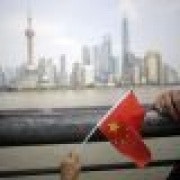China debates the TPP
A host of issues continue to plague Trans-Pacific Partnership (TPP) negotiations.
Constant reminders of how difficult these issues are to conclude come from actors as diverse as Japanese rice farmers, health care advocates in Canada and Australia, and Chilean officials concerned about intellectual property rights and capital controls.
But perhaps the biggest question hanging over the TPP is whether China might join the talks. Such a prospect was unthinkable as recently as a year ago. Yet now it is receiving serious consideration following China’s Ministry of Commerce surprise announcement in May 2013 that China may consider joining the TPP ‘on the basis of equality and mutual benefit’ -- a notable change from its previous rejectionist position.
China’s reconsideration arises from Japan’s participation in the TPP, which has led to a debate inside China about how best to respond.
It was not that long ago that opinion in China on the TPP was focused firmly on the US. For example, in early 2013 an editorial in the People’s Daily described the TPP as ‘stagnating’ and heading for ‘long-term deadlock’ under US leadership. But Japan’s entry into the negotiations in April 2013 clearly undermined this confidence in the TPP’s stagnation -- and has been something of a ‘tipping point’ for China.
Three main lines of response in China can be detected. The first extends China’s ‘containment’ accusation long levelled at the US to now include Japan; the second re-emphasises the importance of ASEAN and increasingly APEC as the appropriate lead institutions for regional trade discussions; and the third re-evaluates whether China should join the TPP negotiations. These responses are not mutually exclusive and elements of all three can be found in official policy responses.
In terms of the first response, casting Japan along with the US as seeking ‘containment’, Prime Minister Shinzo Abe’s engagement with the TPP and visits to ASEAN countries are seen as attempts to contain China’s rise. Commentators in China have also argued that Japan has dragged its feet in the China–South Korea–Japan FTA negotiations -- prioritising the TPP to oppose China’s increasing economic role in the region. Japan and the US are seen as supporters of the ‘status quo’ in the region and as seeking to block China’s economic interests.
The second response has been to promote and reinforce the roles of ASEAN and APEC as the lead institutions in the region to weaken the influence of the US and Japan. Unusually, both President Xi Jinping and Premier Li Keqiang visited Southeast Asia in 2013 -- a move that reflects the importance of the region in Beijing’s current approach to international affairs. This has been accompanied by an ‘upgrading’ of the China–ASEAN FTA, the promotion of a new ‘diamond decade’, and a broader diplomatic offensive in which the Confucian philosophy of ‘seeking harmony but not uniformity’ has been invoked as a guiding principle in China–ASEAN relations; this contrasts with the US approach to trade relations which requires a uniformity of rules.
President Xi’s address to the 21st APEC economic leaders’ meeting in Bali, held in October 2013, called for ‘open and inclusive’ trade agreements with APEC playing a ‘leading role’. The US description of TPP being ‘non-exclusionary’ refers to the fact that all sectors are included in the negotiations; China’s charge of ‘exclusion’ is based on the fact that not all countries are in the region are included in the TPP.
The greater emphasis placed on APEC represents a shift in China’s thinking that had previously touted ASEAN 3 as the preferred grouping. Japan’s ‘defection’ to the TPP has led to Beijing’s reassessment of the role that APEC might play in neutralising US and Japanese influence.
But while China’s responses have included castigating the US and Japan for ‘containment’, and developing closer ties with ASEAN and promoting APEC, they have also included consideration of joining the TPP itself. Certainly there is a constituency in China that would like China to join the TPP negotiations. ‘Pro-reform’ groups see this as a way of pushing China further down the path of economic reform and opening the domestic sector to further competition. For example, Wei Jiangou, a former Deputy Minister of Commerce, has argued that ‘as an APEC member, China should not look at TPP just as a US strategic dream, it should also be China’s strategic dream’. The TPP agenda is seen as a vehicle for pushing faster domestic reform in much the same way as reformers used 2001 WTO entry as a way to promote domestic liberalisation to meet WTO entry conditions.
The trade game is shifting quickly in the region. How China decides to play it will affect the outcome and also tell us more about the strength of domestic policy interests.
Paul Bowles is Professor of Economics and International Studies at the University of Northern British Columbia, Canada.
This article was originally published on East Asia Forum. Republished with permission.













